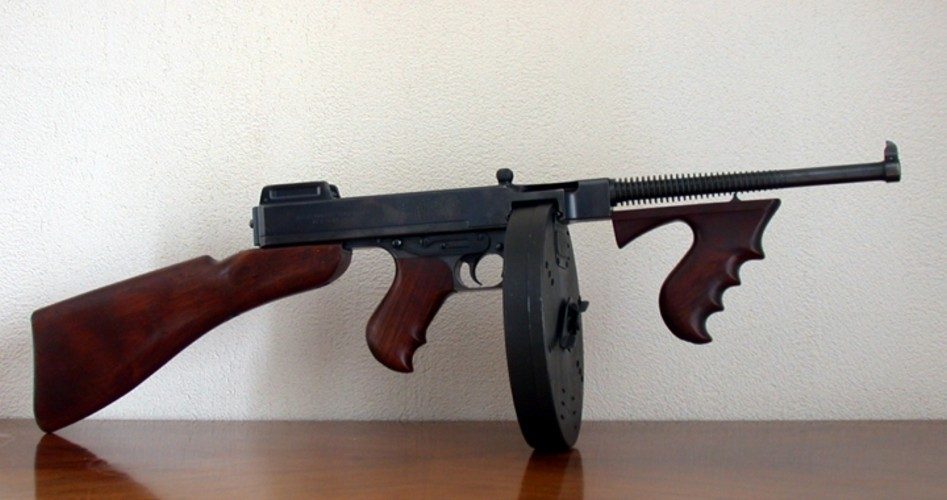
A scathing report from the Interior Department’s Office of Inspector General (OIG) claims that the U.S. Park Police (USPP) hasn’t the first clue how many guns it possesses or where they are and, furthermore, doesn’t really care.
This “lackadaisical attitude toward firearms management” leads to “conditions that would allow for theft and misuse of firearms, and the ability to conceal the fact if weapons were missing,” Deputy Inspector General Mary L. Kendall wrote in a memorandum accompanying the report.
OIG initiated its review of USPP’s firearms policies in response to an anonymous complaint that (1) USPP could not account for government-issued military-style rifles, (2) the agency had not conducted a weapons inventory because it could not account for all its weapons, and (3) some of the missing weapons might have been taken by USPP officers for personal use.
It took just five days of unannounced reviews of USPP weapons-storage areas for OIG to confirm those allegations.
“We discovered that hundreds of handguns, rifles, and shotguns were not listed on official USPP inventory records,” OIG reported. “Many of these had serial numbers that had not been submitted to USPP property officers for inclusion into the property management system. We also found weapons in areas other than their assigned locations.”
Although the National Park Service (NPS) Handbook requires agencies under NPS control, including USPP, to acquire only those firearms needed for law-enforcement purposes, OIG “discovered more than 1,400 extra weapons,” including “477 military-style automatic and semiautomatic rifles” and some that “fulfilled no operational need” — all this for an agency with just 640 officers.
USPP’s inventory controls are “incomplete and poorly managed,” wrote OIG. Inventories are conducted on a semiannual basis, but no one verifies that the contents of the submitted inventory forms are accurate. USPP could not supply a current weapons inventory to OIG because it was unable to access an Interior Department database. The current USPP firearms custodian maintains his own inventory document and is trying to bring it up to date, but given “numerous errors on past official inventory records,” he “had no idea how many firearms USPP possessed as of the date of our interview,” said the report.
In addition, noted OIG:
The Force Firearms Custodian said he continued to find and receive weapons from different locations without NPS property numbers. According to his estimate, approximately 100 firearms, including shotguns and automatic weapons, did not have NPS property numbers and did not appear on inventory records. The Force Firearms Custodian provided several examples of poor weapons accountability. He recovered a USPP handgun from a U.S. Department of Housing and Urban Development (HUD) OIG special agent who previously had been employed on a USPP special weapons and tactics team. According to the Force Firearms Custodian, the HUD agent ran a firearms qualification course in 2011 for former law enforcement officers who continued to carry firearms while retired. A former USPP Chief attended this training and still carried a handgun identified as USPP property. The HUD agent took the weapon from the former Chief and returned it to USPP. The Force Firearms Custodian did not know why the former Chief had retained the firearm. OIG is unaware of how USPP accounted for this weapon on the inventories that followed his retirement.
OIG discovered two other officers who were keeping USPP firearms at their residences without authorization; one was storing a semiautomatic rifle he had been issued while detailed to the 2013 presidential inauguration.
USPP often acquires firearms from other government agencies, but it does not follow proper procedures either to obtain the weapons or to inventory them. The USPP chief of police is supposed to sign off on all weapons acquisitions, but the current chief, Teresa Chambers, “did not recall any instance where a written request for weapons had been presented her,” OIG found. Despite this, USPP has acquired over 200 guns from other agencies in the last 13 months. While some are in the possession of the firearms custodian, others are not; and the ones that are in his possession have not been added to the official inventory because he plans to destroy them.
Then there is the matter of weapons the agency doesn’t — and can’t — even use anymore. OIG found that USPP still has 20 World War II-era M1 Garand rifles and four Prohibition-era Thompson submachine (“Tommy”) guns. The agency says it has no policy for destroying or otherwise disposing of these guns.
None of this, naturally, has happened in a vacuum. Lower-level USPP personnel have been careless in their acquisition and control of firearms because their superiors have shown no interest in such matters either.
The firearms custodian, for instance, sent a memorandum to Chambers in 2011 concerning the inventory discrepancies he had discovered. He told OIG that when he asked Chambers for direction, “she told him to continue to resolve the discrepancies” but offered no “specific direction on what he was supposed to do or a specific date for completion.” His supervisors likewise showed little interest in his progress, requesting no “regular detailed briefings.”
While USPP — believe it or not — has no policy for reporting and investigating missing weapons, the Interior Department does. It requires a “board of survey” to investigate missing “sensitive property” such as firearms, according to OIG. The firearms custodian submitted paperwork requesting a board of survey inquiry in October 2011, but no inquiry appears to have taken place. A training branch captain who has been the USPP board of survey chairman since 2009 “said that he had never conducted a board of survey and did not know who its members were,” but he did not believe one was necessary in the case of missing weapons. Another official said the last board of survey for weapons had been conducted in 2010. Still another knew the board of survey should have been conducted but never followed up to see that it was. And “Chief Chambers stated that she was not aware of what a board of survey was and whether it was required to be conducted for missing weapons.”
All this adds up to a “decade-long theme of inaction and indifference of USPP leadership and management at all levels,” Kendall charged in her memorandum. “Historical evidence indicates that this indifference is a product of years of inattention to administrative detail and management principles.”
She recommended that USPP establish “a professionally responsible firearms management program” but expressed “little confidence that USPP has the managerial commitment to carry out this effort without direct and frequent oversight from the National Park Service and OIG.”
Everyone at USPP knows, of course, that he has little to fear from this report. Promises of improvement have been and will be made, but precious little is likely to change. Even if one of USPP’s guns were actually used in the commission of a crime, well, look at how many heads have rolled over Fast and Furious. There simply is nothing to be gained by expending the time and effort necessary to control its weapons inventory.
There may, however, be something to be gained from showing the OIG report to the next gun-control advocate who assures you that only the government can be trusted with firearms.
Photo of a Thompson submachine gun



